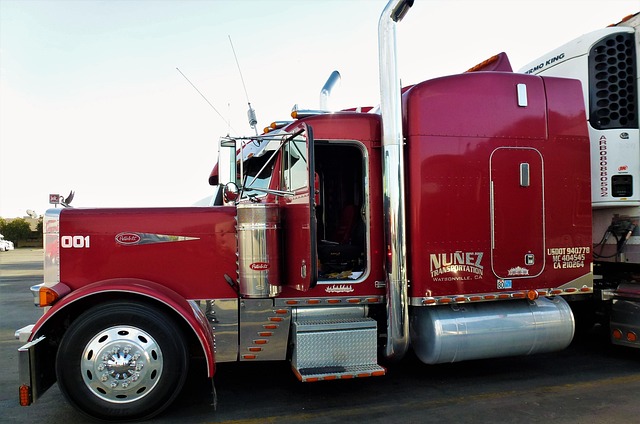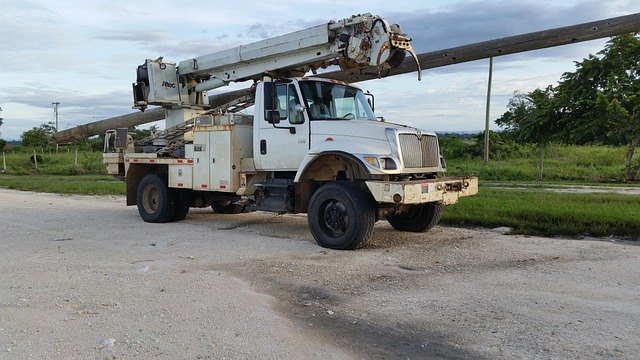Learn how to register a car in California with our comprehensive guide. Discover the essential steps, from understanding state requirements and preparing for VIN verification to completing the application process and gathering necessary documents. We’ll walk you through each phase, ensuring a smooth and efficient registration experience. Optimize your search by exploring key terms like ‘vin verification’ for a seamless California car registration journey.
- Understanding California Car Registration Requirements
- Preparing for Vehicle Identification Number (VIN) Verification
- Completing the Application Process Step-by-Step
- Gathering Necessary Documents and Fees
- Submitting and Tracking Your Registration
Understanding California Car Registration Requirements

In California, registering your car involves understanding several key requirements. One crucial aspect is ensuring accurate and up-to-date information, including the vehicle’s make, model, year, and unique identifier—the Vehicle Identification Number (VIN). This process begins with a comprehensive vin verification to establish ownership and assess the vehicle’s condition. It’s essential to have all necessary documents in order, such as proof of insurance, identification, and any applicable fees.
Additionally, California requires regular car inspections to guarantee roadworthiness and safety standards. A mobile vin verifier or mobile vin inspection service can streamline this process by providing on-site assessments, making it more convenient for vehicle owners. These services utilize advanced technology to confirm the VIN details and ensure compliance with state regulations, simplifying what could otherwise be a complex administrative task.
Preparing for Vehicle Identification Number (VIN) Verification

Before you begin the registration process, it’s crucial to prepare for the Vehicle Identification Number (VIN) verification step. This is a critical part of ensuring your car’s authenticity and history is accurately represented. Start by gathering all necessary documents related to the vehicle, such as the title, registration papers, and insurance information. Additionally, ensure you have the VIN number readily available—this unique identifier can be found on the vehicle’s certificate of origin or on the dashboard near the windshield.
Consider using a mobile vin verifier or scheduling a vin inspection to get a head start. These services offer convenient, on-site checks, allowing you to verify the VIN and ensure there are no discrepancies before heading to the California Department of Motor Vehicles (DMV) office. A thorough prep process will make the registration process smoother, so take time to double-check these details to avoid any potential delays or issues.
Completing the Application Process Step-by-Step

Completing the registration process for your vehicle in California involves several steps, and understanding the application procedure is crucial. Here’s a step-by-step guide to ensure a smooth experience:
1. Gather Necessary Documents: Before you begin, collect all required paperwork. This typically includes your vehicle’s registration certificate from the previous state, proof of insurance, a valid driver’s license, and the Vehicle Identification Number (VIN) verification report. A mobile VIN verifier can help with this process by providing an accurate and quick inspection of your car’s history.
2. Fill Out the Application Form: Visit the California Department of Motor Vehicles (DMV) website to access the online vehicle registration application. Fill out the form accurately, providing details about your vehicle, including its make, model, year, and color. Ensure that the VIN is entered correctly, as it’s a unique identifier for your car and is crucial for vin inspection. After completing the form, submit it along with the required documents to the DMV.
Gathering Necessary Documents and Fees

Before you begin the registration process, ensure you gather all the essential documents and fees required by the California Department of Motor Vehicles (DMV). This includes your vehicle’s title, which proves ownership, and a valid driver’s license or ID card. Additionally, proof of insurance is mandatory, so have your policy details ready. Another crucial step is to undergo a Vehicle Identification Number (VIN) verification process, which can be done through a mobile VIN inspection service, ensuring your vehicle’s history is checked against any reported issues or recalls.
The DMV also requires various fees for registration, including a base fee and additional charges based on your vehicle type and age. It’s recommended to check the official DMV website for the most up-to-date fee schedule. By having all these documents and understanding the associated costs, you’ll be well-prepared to streamline the car registration process in California.
Submitting and Tracking Your Registration

Once you’ve gathered all necessary documents, it’s time to submit your registration application. In California, this process typically involves visiting a local DMV office or utilizing their online platform. During submission, ensure that you provide accurate information and present valid documents for verification. A key step in this process is the VIN (Vehicle Identification Number) verification, which can be done through a mobile VIN inspection or at a designated DMV center. This step ensures the authenticity of your vehicle’s details, streamlining the registration process.
Tracking your registration status is essential to avoid delays. The California DMV offers online tools and mobile apps to monitor the progress of your application. By utilizing these resources, you can stay informed about any required additional documents or updates. Mobile VIN verification plays a crucial role here, as it allows for swift confirmation of your vehicle’s history, ensuring a seamless registration experience.
Registering a car in California involves several steps, from understanding the state’s requirements to submitting the necessary documents. The key aspects include preparing for a Vehicle Identification Number (VIN) verification, completing the application process step-by-step, gathering all required documents and fees, and finally, submitting and tracking your registration. By adhering to these guidelines, you’ll ensure a smooth process that complies with California’s regulations, including the crucial vin verification.
